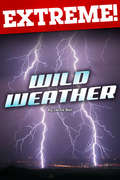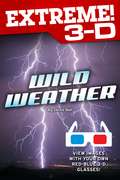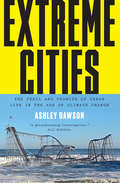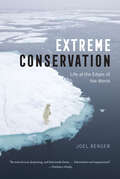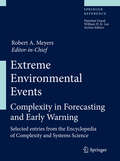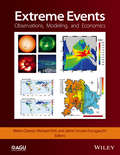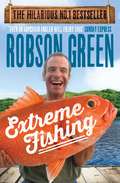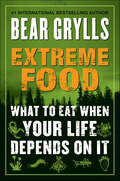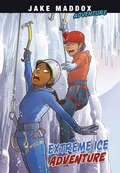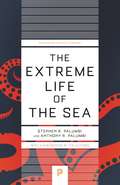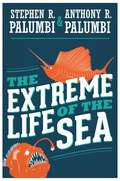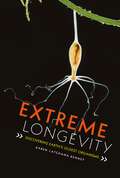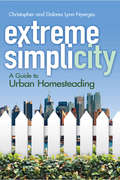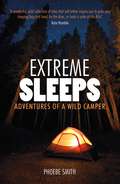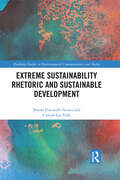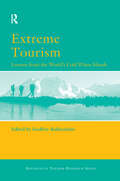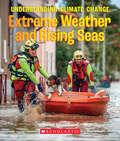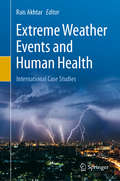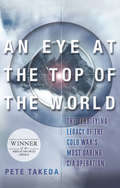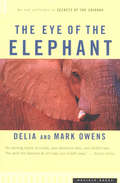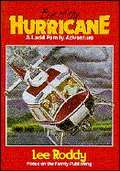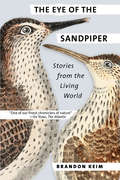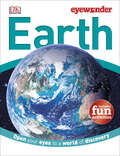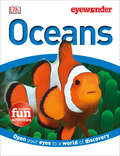- Table View
- List View
The Extraterritorial Application of the Human Right to Water in Africa
by Takele Soboka BultoInternational human rights law has only recently concerned itself with water. Instead, international water law has regulated the use of shared rivers, and only states qua states could claim rights and bear duties towards each other. International human rights law has focused on its principal mission of taming the powers of a state acting territorially. Takele Soboka Bulto challenges the established analytic boundaries of international water law and international human rights law. By demonstrating the potential complementarity between the two legal regimes and the ensuing utility of regime coordination for the establishment of the human right to water and its extraterritorial application, he also shows that human rights law and the international law of watercourses can apply in tandem with the purpose of protecting non-national non-residents in Africa and beyond.
Extreme: Wild Weather
by Jackie BallExperience the most awesome power on Earth: wild weather! From destructive thunderstorms to devistating tornados, wild weather can appear out of nowhere and uproot trees, tear apart houses, and bring cities to a standstill. Extreme: Wild Weather is packed with dramatic photos and the insight you need to understand droughts, ice storms, tsunamis, and more.
Extreme 3-D: Wild Weather
by Jackie BallExperience the most awesome power on Earth: wild weather! From destructive thunderstorms to devistating tornados, wild weather can appear out of nowhere and uproot trees, tear apart houses, and bring cities to a standstill. Extreme 3-D: Wild Weather is packed with dramatic 3-D photos and the insight you need to understand droughts, ice storms, tsunamis, and more.
Extreme Cities: The Peril and Promise of Urban Life in the Age of Climate Change
by Ashley DawsonA cutting exploration of how cities drive climate change while being on the frontlines of the coming climate crisisHow will climate change affect our lives? Where will its impacts be most deeply felt? Are we doing enough to protect ourselves from the coming chaos? In Extreme Cities, Ashley Dawson argues that cities are ground zero for climate change, contributing the lion’s share of carbon to the atmosphere, while also lying on the frontlines of rising sea levels. Today, the majority of the world’s megacities are located in coastal zones, yet few of them are adequately prepared for the floods that will increasingly menace their shores. Instead, most continue to develop luxury waterfront condos for the elite and industrial facilities for corporations. These not only intensify carbon emissions, but also place coastal residents at greater risk when water levels rise.In Extreme Cities, Dawson offers an alarming portrait of the future of our cities, describing the efforts of Staten Island, New York, and Shishmareff, Alaska residents to relocate; Holland’s models for defending against the seas; and the development of New York City before and after Hurricane Sandy. Our best hope lies not with fortified sea walls, he argues. Rather, it lies with urban movements already fighting to remake our cities in a more just and equitable way.As much a harrowing study as a call to arms Extreme Cities is a necessary read for anyone concerned with the threat of global warming, and of the cities of the world.
Extreme Conservation: Life at the Edges of the World
by Joel Berger“By turns lyrical, despairing, and hilariously funny. . . . Informative and impassioned.”—Publishers Weekly On the Tibetan Plateau, there are wild yaks with blood cells thinner than those of horses’ by half, enabling the endangered yaks to survive at 40 below zero and in the lowest oxygen levels of the mountaintops. But climate change is causing the snow patterns here to shift, and with the snows, the entire ecosystem. Food and water are vaporizing in this warming environment, and these beasts of ice and thin air are extraordinarily ill-equipped for the change. A journey into some of the most forbidding landscapes on earth, Joel Berger’s Extreme Conservation is an eye-opening, steely look at what it takes for animals like these to live at the edges of existence. But more than this, it is a revealing exploration of how climate change and people are affecting even the most far-flung niches of our planet. Berger’s quest to understand these creatures’ struggles takes him to some of the most remote corners and peaks of the globe: across Arctic tundra and the frozen Chukchi Sea to study muskoxen, into the Bhutanese Himalayas to follow the rarely sighted takin, and through the Gobi Desert to track the proboscis-swinging saiga. Known as much for his rigorous, scientific methods of developing solutions to conservation challenges as for his penchant for donning moose and polar bear costumes to understand the mindsets of his subjects more closely, Berger is a guide par excellence. He is a scientist and storyteller who has made his life working with desert nomads, in zones that typically require Sherpas and oxygen canisters. Recounting animals as charismatic as their landscapes are extreme, Berger’s unforgettable tale carries us with humor and expertise to the ends of the earth and back. But as his adventures show, the more adapted a species has become to its particular ecological niche, the more devastating climate change can be. Life at the extremes is more challenging than ever, and the need for action, for solutions, has never been greater.
Extreme Environmental Events: Complexity in Forecasting and Early Warning
by Robert A. MeyersExtreme Environmental Events is an authoritative single source for understanding and applying the basic tenets of complexity and systems theory, as well as the tools and measures for analyzing complex systems, to the prediction, monitoring, and evaluation of major natural phenomena affecting life on earth. These phenomena are often highly destructive, and include earthquakes, tsunamis, volcanoes, climate change,, and weather. Early warning, damage, and the immediate response of human populations to these phenomena are also covered from the point of view of complexity and nonlinear systems. In 61 authoritative, state-of-the art articles, world experts in each field apply such tools and concepts as fractals, cellular automata, solitons game theory, network theory, and statistical physics to an understanding of these complex geophysical phenomena.
Extreme Events
by Jaime Urrutia-Fucugauchi Mario Chavez Michael GhilThe monograph covers the fundamentals and the consequences of extreme geophysical phenomena like asteroid impacts, climatic change, earthquakes, tsunamis, hurricanes, landslides, volcanic eruptions, flooding, and space weather. This monograph also addresses their associated, local and worldwide socio-economic impacts. The understanding and modeling of these phenomena is critical to the development of timely worldwide strategies for the prediction of natural and anthropogenic extreme events, in order to mitigate their adverse consequences. This monograph is unique in as much as it is dedicated to recent theoretical, numerical and empirical developments that aim to improve: (i) the understanding, modeling and prediction of extreme events in the geosciences, and, (ii) the quantitative evaluation of their economic consequences. The emphasis is on coupled, integrative assessment of the physical phenomena and their socio-economic impacts. With its overarching theme, Extreme Events: Observations, Modeling and Economics will be relevant to and become an important tool for researchers and practitioners in the fields of hazard and risk analysis in general, as well as to those with a special interest in climate change, atmospheric and oceanic sciences, seismo-tectonics, hydrology, and space weather.
Extreme Fishing
by Robson GreenActor and passionate fisherman Robson Green is on a mission to discover the weird, the wonderful and the way-off-limits of the angling world. Working alongside some of the finest in their field, his exhilarating adventure series Extreme Fishing with Robson Green takes him to the greatest fishing destinations ever seen. Chasing the most elusive and terrifying creatures on the planet, learning new tricks, hearing old stories and eating pretty much everything he catches. It's all here, from island hopping in Canada, ice fishing in Alaska, singing with the Maori in New Zealand to facing crocodiles and octopuses in Australia, hunting for the elusive Striped Bass in North America and struggling with the Mekong Giant Catfish in Thailand. Complete with exclusive material, such as top locations, best and worst catches and extreme fishing tips, this frank, funny and inspiring book charts Robson's extraordinary adventures around the world, and reminds us to live life more boldly and have fun along the way.
Extreme Food: What to Eat When Your Life Depends on It
by Bear GryllsIn the tradition of the million-copy-bestseller SAS Survival Guide, former SAS paratrooper Bear Grylls—the world’s most famous survival expert—teaches the necessary skills for eating in the wild.“There’s no getting away from it; I’ve eaten some pretty extreme things in my time—live tarantulas, raw goat testicles, elephant dung, you name it. In a situation when your life depends on it, you need to put your prejudices aside to keep your stomach filled and your strength up.Whether it’s mastering the art of foraging and cooking up a tasty feast around the campfire or learning about the more extreme end of wild food (ever tried a scorpion kebab?), there’s a lot to learn when it comes to dinner time in the wild. Extreme Food will teach you all the necessary skills and techniques to get your teeth into meals you might never have thought of as food in the first place—and, crucially, how to recognize plants and animals that might end up doing you more harm than good.In today’s world, we rarely need to venture beyond the local supermarket and we turn our noses up at the thought of snacking on bugs and grubs. But out in the wild, Mother Nature has provided us with a plentiful supply of nutritious—if not always delicious—food for the taking. And when needs must, we just have to know where to look.Some of it might take you out of your comfort zone. Some of it might turn your stomach. But it’s saved my life more than once. And one day, it might save yours . . .”—BEAR GRYLLS
Extreme Ice Adventure (Jake Maddox Adventure)
by Jake MaddoxNita and Sohail are thrilled when they win scholarships to attend the Alaska Young Explorers program. Both kids could use the prize money to help their families and set out to compete as hard as they can. But things take a turn when they're paired up on an expedition. The two make a misstep while hiking down a glacier and find themselves in dangerous territory. Nita and Sohail will have to depend on each other and learn to work together...if they want to survive the Alaskan wilderness.
The Extreme Life of the Sea (Princeton Science Library #125)
by Anthony R. Palumbi Stephen R. PalumbiA thrilling tour of the sea's most extreme species, coauthored by one of the world's leading marine scientistsThe ocean teems with life that thrives under difficult situations in unusual environments. The Extreme Life of the Sea takes readers to the absolute limits of the ocean world—the fastest and deepest, the hottest and oldest creatures of the oceans. It dives into the icy Arctic and boiling hydrothermal vents—and exposes the eternal darkness of the deepest undersea trenches—to show how marine life thrives against the odds. This thrilling book brings to life the sea's most extreme species, and tells their stories as characters in the drama of the oceans. Coauthored by Stephen Palumbi, one of today’s leading marine scientists, The Extreme Life of the Sea tells the unforgettable tales of some of the most marvelous life forms on Earth, and the challenges they overcome to survive. Modern science and a fluid narrative style give every reader a deep look at the lives of these species.The Extreme Life of the Sea shows you the world’s oldest living species. It describes how flying fish strain to escape their predators, how predatory deep-sea fish use red searchlights only they can see to find and attack food, and how, at the end of her life, a mother octopus dedicates herself to raising her batch of young. This wide-ranging and highly accessible book also shows how ocean adaptations can inspire innovative commercial products—such as fan blades modeled on the flippers of humpback whales—and how future extremes created by human changes to the oceans might push some of these amazing species over the edge.
The Extreme Life of the Sea
by Stephen R. Palumbi Anthony R. PalumbiA thrilling tour of the sea's most extreme species, written by one of the world's leading marine scientistsThe ocean teems with life that thrives under difficult situations in unusual environments. The Extreme Life of the Sea takes readers to the absolute limits of the ocean world—the fastest and deepest, the hottest and oldest creatures of the oceans. It dives into the icy Arctic and boiling hydrothermal vents—and exposes the eternal darkness of the deepest undersea trenches—to show how marine life thrives against the odds. This thrilling book brings to life the sea's most extreme species, and tells their stories as characters in the drama of the oceans. Coauthored by Stephen Palumbi, one of today’s leading marine scientists, The Extreme Life of the Sea tells the unforgettable tales of some of the most marvelous life forms on Earth, and the challenges they overcome to survive. Modern science and a fluid narrative style give every reader a deep look at the lives of these species.The Extreme Life of the Sea shows you the world’s oldest living species. It describes how flying fish strain to escape their predators, how predatory deep-sea fish use red searchlights only they can see to find and attack food, and how, at the end of her life, a mother octopus dedicates herself to raising her batch of young. This wide-ranging and highly accessible book also shows how ocean adaptations can inspire innovative commercial products—such as fan blades modeled on the flippers of humpback whales—and how future extremes created by human changes to the oceans might push some of these amazing species over the edge.An enhanced edition is also available and includes eleven videos.
Extreme Longevity: Discovering Earth's Oldest Organisms
by Karen Latchana KenneyMeet the science experts who study specimens of extreme longevity in both the plant and animal kingdoms, such as the 80,000-year-old root system of Pando (a colony of male quaking aspens), 11,000-year-old deep-sea sponges, and 400-year-old sharks. Learn about technologies used to determine age and longevity, including DNA sampling, growth rings, and radiocarbon dating. See how scientists located these long-lived species were and why and how they resist disease and aging. And delve into how scientists are using what they know about aged plants and animals to research how we can promote longevity in humans.
Extreme Simplicity: A Guide to Urban Homesteading
by Christopher Nyerges Dolores Lynn NyergesThis perfect guide to self-sufficient city dwelling was written by a pair of gentle survivalists who brought nature to their Los Angeles home. Christopher and Dolores Lynn Nyerges are prepared for everything from power failures and terrorist attacks to droughts and earthquakes. They'll show you the path to self-reliance, with strategies for coping with disasters as well as making the most of everyday life.The authors explain how to use available natural resources in an intelligent, efficient way. Their methods include growing and preserving garden produce and finding wild edibles; harvesting storm runoff for backup water supplies; preparing food with a wood stove and solar cooker; recycling everything from bottle caps to wood chips; keeping chickens, bees, and other animals; and much more.
Extreme Sleeps: Adventures of a Wild Camper
by Phoebe SmithGlobetrotter Phoebe Smith sets out to prove that outdoor adventures are available in the UK which rival anything found elsewhere in the world. In this sometimes scary and frequently funny journey around the country, Phoebe attempts to conquer its wildest places, defy her perceptions of the great outdoors and teach her about herself along the way.
Extreme Sustainability Rhetoric and Sustainable Development (Routledge Studies in Environmental Communication and Media)
by Mauro Fracarolli Nunes Camila Lee ParkThis book considers the nature, causes, and consequences of extreme pro- and anti-sustainability rhetoric, exploring how and why the expressions of radical views on sustainability-related themes may prevent real sustainable development. Following a thorough introduction on sustainability rhetoric, on dialogue, and on the role played by ideologies in the building of environmental beliefs, Fracarolli Nunes and Lee Park examine positions and statements expressed or made by individuals, companies, governments, and NGOs in the last decades. The outcomes of these considerations lead to the classification of expressions in different categories of sustainability rhetoric, laying the groundwork for the development of a ‘sustainability spectrum’: a metric for the level of radicalization of sustainability positions, which ranges from apocalyptic views to ultimate denial. Through the combination of historical perspectives, theoretical frameworks, and conceptual developments, this book provides a foundation for a more informed and productive dialogue between radically opposing views on sustainability issues. This volume will be of great interest to students, scholars, and practitioners researching and working in the areas of environmental communication and media, environmental politics, and sustainable development.
Extreme Tourism: Lessons from the World's Cold Water Islands
by Godfrey BaldacchinoThis book is a pioneering investigation of the tourism practices in the world's other, cold water, islands. Located in extreme latitudes and subject to extreme weather conditions, these islands have been developing their tourism appeal in manners that appear sustainable. They present themselves in images that speak to the pristine, unique and superlative aspects of their natural environment, history and culture. Limited seasonality, difficulty of access, restricted infrastructure, harsh climates and water too cold to swim in, are integral features of the tourism industry, often welcomed as appropriate filters to the slide to the mass market. The collection contains 13 island case studies. A set of seven hail from Northern latitudes: Baffin (Nunavut, Canada), Banks (Northwest Territories, Canada), Greenland/ Kaalaalit Nunaat, Iceland, Luleå (Sweden), Nunivak (Alaska), Solovetsky (Russia) and Svalbard (Norway). A second set of four cover the Southerly islands of Chatham (New Zealand), Falklands, Macquarie (Australia) and Stewart (New Zealand). Two other chapters discuss islands from the particular vantage points of cruise ship tourism, one for the Arctic region and one for the Antarctic. Additionally, five conceptual chapters provide insights into key tourism management issues, as they apply to cold water island experiences:(a) human resources; (b) environment; (c) promotion; (d) seasonality; and (e) access.
Extreme Weather and Rising Seas (A True Book (Relaunch))
by Karina HamalainenWhat is the difference between climate and weather? How does ice melting at the South Pole affect sea levels thousands of miles away?This book explains how climate change contributes to rising sea levels and hazards such as heat waves, droughts, and extra-powerful storms. Learn how scientists analyze these extreme events and predict how they might change in the future.Glaciers are melting. Summers are heating up. Sea levels are on the rise. Climate change is affecting every corner of our planet - and it's the subject of a lot of concern, activism, and debate. STEM meets current events in this new A True Book set that offers readers the chance to learn about the causes and effects of climate change, as well as how people around the world are reacting to it. Students will read about the history and scope of the problem, analyze the same kinds of evidence that scientists do, and come away with tools that will help them respond to this pressing global issue.This series covers Next Generation Science Standards core ideas including Weather and Climate, Human Impacts on Earth Systems, Conservation of Energy and Energy Transfer, and Biodiversity and Humans.
Extreme Weather Events and Human Health: International Case Studies
by Rais AkhtarThis edited book assesses the impacts of various extreme weather events on human health and development from a global perspective, and includes several case studies in various geographical regions around the globe. Covering all continents, it describes the impact of extreme weather conditions such as flash floods, heatwaves, cold waves, droughts, forest fires, strong winds and storms in both developing and developed countries. The contributing authors also investigate the spread of diseases and the risk to food security caused by drought and flooding. Further, the book discusses the economic damage resulting from natural disasters including hurricanes. It has been estimated that in 2017 natural disasters and climate change resulted in economic losses of 309 billion US dollars. Scientists also predict that if nothing is done to curb the effects of climate change, in Europe the death toll due to weather disasters could rise 50-fold by the end of the 21st century, with extreme heat alone causing more than 150,000 deaths a year, as the report on global warming of 1.5°C warns that China, Russia and Canada’s current climate policies would steer the world above a catastrophic 5°C of warming by the end of 2100. As such, the book highlights how the wellbeing of different populations is threatened by extreme events now and in the foreseeable future.
An Eye at the Top of the World: The Terrifying Legacy of the Cold War's Most Daring CIA Operation
by Pete TakedaAt some point during the inhumanly cold Himalayan winter straddling 1965 and 1966, a peculiar collection of box-shaped objects -- one sprouting a six-foot, insect-like antenna -- plummets nine thousand feet down the sheer flanks of a remote peak. Ripped from its moorings by an avalanche, the jumbled apparatus slides down a funnel-shaped hourglass of hard snow and shoots over a black cliff band, careening a vertical distance six times the height of the Empire State building. The boxes come to rest on the glacier at the mountain's base. One, an olive-drab casing the size of a personal computer, begins to sink. Then, trailing a robotic dogtail of torn wires, it slowly burns through the snow, melting into solid blue glacial ice, eventually disappearing beneath the surface, and never seen again. No one actually witnessed this event. But as you read these words, nearly four pounds of plutonium -- locked in the glacier's dark unknowable heart -- are almost certainly moving ever closer to the source of the Ganges River. Eye at the Top of the World, provides a harrowing present-day account of Takeda's expedition to solve the mystery of Nanda Devi.
The Eye of the Elephant: An Epic Adventure in the African Wilderness
by Delia Owens Mark OwensAn &“exciting&” true account of battling the elephant poachers of Zambia by the author of Where the Crawdads Sing and her fellow biologist (The Boston Globe). Intelligent, majestic, and loyal, with lifespans matching our own, elephants are among the greatest of the wonders gracing the African wilds. Yet, in the 1970s and 1980s, about a thousand of these captivating creatures were slaughtered in Zambia each year, killed for their valuable ivory tusks. When biologists Mark and Delia Owens, residing in Africa to study lions, found themselves in the middle of a poaching fray, they took the only side they morally could: that of the elephants. From the authors of Secrets of the Savanna, The Eye of the Elephant is &“part adventure story, part wildlife tale,&” recounting the Owens&’s struggle to save these innocent animals from decimation, a journey not only to supply the natives with ways of supporting their villages, but also to cultivate support around the globe for the protection of elephants (The Boston Globe). Filled with daring exploits among disgruntled hunters, arduous labor on the African plains, and vivid depictions of various wildlife, this remarkable tale is at once an adventure story, a travelogue, a preservationist call to action, and a fascinating examination of both human and animal nature.
Eye of the Hurricane (Ladd Family Adventure #9)
by Lee RoddyA petty quarrel and efforts to foil poachers who are after some rare birds seem unimportant as members of the Ladd family separately struggle to survive when a powerful hurricane hits the island of Kauai.
The Eye of the Sandpiper: Stories from the Living World
by Brandon KeimIn The Eye of the Sandpiper, Brandon Keim pairs cutting-edge science with a deep love of nature, conveying his insights in prose that is both accessible and beautiful. In an elegant, thoughtful tour of nature in the twenty-first century, Keim continues in the tradition of Lewis Thomas, Stephen Jay Gould, and David Quammen, reporting from the frontiers of science while celebrating the natural world’s wonders and posing new questions about our relationship to the rest of life on Earth. The stories in The Eye of the Sandpiper are arranged in four thematic sections. Each addresses nature through a different lens. The first is evolutionary and ecological dynamics, from how patterns form on butterfly wings to the ecological importance of oft-reviled lampreys. The second section explores the inner lives of animals, which science has only recently embraced: empathy in rats, emotions in honeybees, spirituality in chimpanzees. The third section contains stories of people acting on insights both ecological and ethological: nourishing blighted rivers, but also caring for injured pigeons at a hospital for wild birds and demanding legal rights for primates. The fourth section unites ecology and ethology in discussions of ethics: how we should think about and behave toward nature, and the place of wildness in a world in which space for wilderness is shrinking. By appreciating the nonhuman world more fully, Keim writes, "I hope people will also act in ways that nourish rather than impoverish its life—which is, ultimately, the problem that needs to be solved at this Anthropocene moment, with a sixth mass extinction looming, once-common animals becoming rare, and Earth straining to support 7.5 billion people. The solution will come from a love of nature rather than chastisement or lamentation."
Eye Wonder: Open Your Eyes to a World of Discovery (Eye Wonder)
by DKOpen your eyes to a world of discovery. Offering a new level of information through powerful visuals, the Eye Wonder reference series was specially developed for children ready for their first books about the natural world. Full-color photography is matched with clearly written text to build a foundation for advanced exploration and help show children a stunning new view of the world.
Eye Wonder: Open Your Eyes to a World of Discovery (Eye Wonder)
by DKWhat's life like under the sea? Curious children will love learning about the ocean and discovering what life is like in the depths of the ocean. Eye Wonder: Oceans is packed with pictures to make learning about the ocean fun and interesting and to keep visual learners engaged. Through the activities and pictures in Eye Wonder: Oceans, your junior oceanographer can visit coral reefs and kelp forests, meet a host of sea creatures ranging from sharks to seals to jellyfish, and learn how sea creatures survive in their watery world. We've added fun new activities to Eye Wonder: Oceans to encourage engagement, learning, and knowledge retention. Visual learners and readers alike will love exploring and learning through Eye Wonder: Oceans. These books are designed to teach through pictures and a visual approach, encouraging curiosity in young, school-age children. We've added games, activities, and quizzes to engage children even more — Eye Wonder: Oceans activities are designed to teach kids to both remember more of what they've learned, and learn to research when they want to know more, teaching general study skills as well as ocean-specific. Learn about science, history, and the natural world through beautiful photography and lively, age-appropriate text. The Eye Wonder series organizes information in a way that's easy to search, easy to read, and easy to learn.

